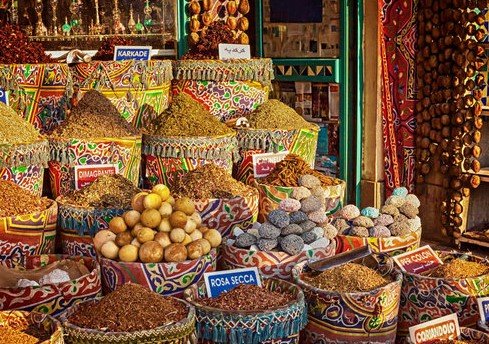Egypt’s food industry has set a new record with exports totaling $4.03 billion in the first half of 2025, marking a strong growth compared to previous years. This surge comes from rising global demand for Egyptian products like processed foods, dairy items, and fresh produce, driven by government support and market expansion efforts.
Key Drivers Behind the Export Growth
Experts point to several factors fueling this increase. The Egyptian government has rolled out incentives to boost production and quality standards, helping local firms compete on the world stage. At the same time, global events like supply chain shifts have opened doors for Egypt’s affordable and diverse food offerings.
Demand from major markets has played a big role. Countries in the Middle East, Africa, and Europe show strong interest in Egyptian goods. For instance, processed snacks and canned items have seen higher sales due to their long shelf life and competitive prices. This trend aligns with broader economic goals to diversify exports beyond traditional sectors.
The first half of 2025 saw a 6 percent rise from the same period in 2024, when exports hit $3.2 billion. Industry leaders expect this momentum to continue, with projections for full year figures possibly topping $8 billion. Such growth supports jobs and brings in vital foreign currency.

Top Export Products and Their Performance
Egypt’s food exports cover a wide range, from fresh items to processed goods. Fruits and vegetables lead the pack, with citrus fruits like oranges making up a large share. Dairy products, including cheese and yogurt, have also gained traction in international markets.
Here are some standout categories:
- Processed foods: Snacks, canned goods, and ready meals contributed about 25 percent of the total value.
- Dairy items: Milk and cheese exports grew by 15 percent year over year.
- Fresh produce: Vegetables and fruits, especially from the Nile Delta region, saw high demand in Europe and the Gulf.
- Grains: Wheat and rice shipments increased due to global shortages in other areas.
These products benefit from Egypt’s fertile lands and modern farming techniques. Recent investments in cold storage and logistics have reduced waste and improved delivery times, making Egyptian exports more reliable.
In the first six months of 2025, frozen vegetables and fruits alone brought in around $500 million. This reflects a shift toward value added items that fetch higher prices abroad.
Overall, the sector’s success stems from blending traditional strengths with new technologies. Farmers and factories work together to meet strict international standards, ensuring products pass quality checks in key destinations.
Major Markets Fueling the Surge
Arab countries remain the top buyers, taking in 55 percent of Egypt’s food exports. Saudi Arabia leads with purchases worth $258 million in the first half, followed by Sudan at $163 million and Libya at $157 million.
European nations are catching up fast. The Netherlands imported $135 million, while Italy bought $103 million. These figures show Egypt’s push into new territories through trade deals and promotions.
| Market | Export Value (Million USD) | Key Products |
|---|---|---|
| Saudi Arabia | 258 | Dairy and processed foods |
| United States | 230 | Fruits and vegetables |
| Sudan | 163 | Grains and cereals |
| Libya | 157 | Canned goods |
| Netherlands | 135 | Frozen produce |
| Jordan | 135 | Snacks and dairy |
| UAE | 108 | Fresh fruits |
| Algeria | 108 | Vegetables |
| Iraq | 107 | Wheat products |
| Italy | 103 | Citrus fruits |
This table highlights the diversity of buyers and products. The United States emerged as a surprise top importer, with $230 million in deals, mainly for fresh and frozen items. Such spread reduces risks from relying on a few markets.
African nations like Sudan and Algeria value Egypt’s grains amid regional food security concerns. Meanwhile, Gulf states prefer dairy and snacks for their growing populations.
Challenges and Future Outlook
Despite the gains, the industry faces hurdles. Rising global inflation and shipping costs from events like the Ukraine conflict have squeezed margins. Water scarcity in Egypt also poses risks to farming output.
To tackle these, the government is investing in sustainable practices. New irrigation projects aim to reclaim land and boost yields. Trade fairs and digital marketing help connect exporters with buyers worldwide.
Looking ahead, experts predict steady growth. If trends hold, 2025 could see total food exports exceed $8 billion, up from $6.1 billion in 2024. This would strengthen Egypt’s economy and create thousands of jobs.
Recent data shows agricultural exports alone hit 6.24 million tons by mid July 2025, a jump from last year. With new markets opening in Asia and Latin America, the sector looks set for even bigger achievements.
Government Support and Economic Impact
The Ministry of Trade and Industry has been key in this success. Programs offer subsidies for exporters and training on global standards. These steps have helped small firms enter big markets.
On the economic front, food exports bring in foreign cash and support related industries like packaging and transport. They also help balance trade deficits, which shrank by 38 percent in early 2025.
Communities benefit too. In rural areas, higher demand means better incomes for farmers. Urban factories see more hires, reducing unemployment.
As Egypt pushes for self reliance in food production, these exports show the country’s growing role in global supply chains. Ties with international bodies like the USDA provide insights and partnerships.
What do you think about Egypt’s food export boom? Share your thoughts in the comments and spread the word to friends interested in global trade.
